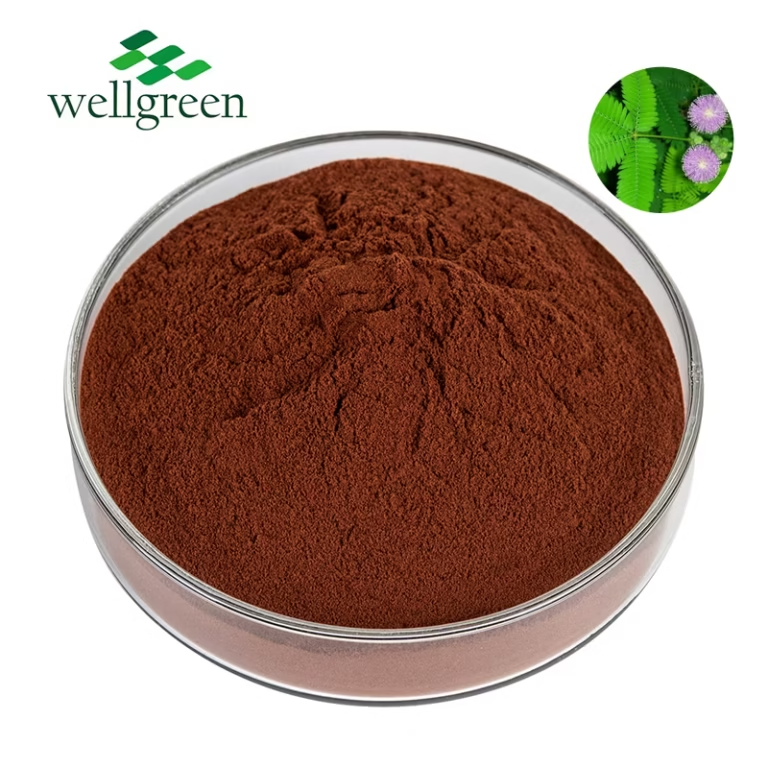
The ethnobotanical exploration of this fascinating species reveals a rich tapestry of traditional knowledge and cultural practices. For centuries, indigenous communities have utilized various parts of this remarkable plant, specifically its root bark, for a multitude of purposes spanning from medicinal remedies to spiritual rituals.
- Traditional healers have long employed Mimosa Hostilis to address numerous ailments such as pain .
- Furthermore, the plant's psychoactive properties have been appreciated in certain cultural contexts, leading to its use in spiritual ceremonies .
Recent scientific investigations have begun to shed light the bioactive compounds responsible for Mimosa Hostilis's purported effects. This ongoing research promises to expand our insights into this ethnobotanically significant plant and its therapeutic benefits .
Dissecting the Chemical Potential of Mimosa Hostilis
Mimosa hostilis, a remarkable plant native to the subtropical regions of the world, has garnered significant scrutiny in recent years. This seemingly species holds a trove of chemical elements with a broad range of potential effects. From traditional medicinal practices to modern research, the analysis of Mimosa hostilis's biological profile continues at an accelerated pace.
Nevertheless, much remains to be discovered about the full magnitude of its power. Researchers are actively exploring into its distinct chemical composition to utilize its characteristics for the betterment of human health and well-being.
Traditional and Modern Uses of Mimosa Hostilis Bark Bark
Mimosa hostilis bark has been utilized in various traditional ceremonies practices for centuries. Native communities often employed it as a potent ingredient in spiritual ceremonies. Traditionally, the bark was ingested to induce altered states of consciousness, facilitating connection with the divine.
Modernly, get more info mimosa hostilis bark has gained recognition for its potential therapeutic uses. Researchers are investigating its chemicals for their possible immune-boosting properties. The extract is often used in topical products due to its regenerative effects.
Furthermore, mimosa hostilis bark contains unique alkaloids that certain people utilize for their psychoactive effects. It is crucial to note that the consumption of mimosa hostilis bark should be approached with caution. Consulting a qualified wellness professional is essential to understand potential risks and consequences.
A Deep Dive into the Pharmacology of Mimosa Hostilis
Mimosa hostilis, a woody plant native to South America, has garnered growing attention in recent years for its chemical properties. The key compound responsible for these effects is copyright, a potent altered-state compound found in various indigenous cultures for ritualistic purposes.
This comprehensive review aims to investigate the physiology of Mimosa hostilis, encompassing its actions on the human organism, potential medical applications, and associated risks. By synthesizing current studies, this review provides a comprehensive understanding of the complex mechanisms underlying the pharmacological potential of Mimosa hostilis.
- Furthermore, this review will shed light on the historical significance of Mimosa hostilis within indigenous communities, providing a holistic perspective on its role.
- Concisely, this review serves as a valuable resource for researchers, healthcare professionals, and individuals aiming to gain a enhanced understanding of the pharmacology of Mimosa hostilis.
Mimosa Hostilis: Ethnomedicinal Applications and Safety Considerations
Mimosa hostilis, a shrub indigenous to central America, has long utilized in ethnomedicine for its potent properties. Indigenous cultures utilize the bark and root of this plant to remedy a variety of ailments, including skin conditions. While promising results indicate its efficacy in treating these disorders, it's crucial to consider the potential safety risks associated with its use.
- Ingestion of M. hostilis ought to be approached with care due to its high concentration of alkaloids, particularly harmine.
- Effects between M. hostilis and other medications can occur, potentially leading to adverse outcomes.
- Consultation with a qualified healthcare professional is essential before incorporating M. hostilis into any health regimen.
Cultivation and Harvesting of Mimosa Hostilis for Sustainable Practices
Cultivating Mimosa tenuiflora successfully requires a deep understanding of its unique needs. Cultivators should aim to create a optimal growing habitat that provides adequate exposure, well-drained soil, and suitable moisture levels. Time-honored knowledge about the plant's preferences can be a valuable asset for cultivating healthy plants.
Harvesting Mimosa tenuiflora should be conducted sustainably to ensure the long-term health of the ecosystem. Cultivators should select developed plants and extract only the required parts. Minimizing damage to the plant during harvesting is crucial for growth.
Responsible harvesting practices include changing harvest sites, excluding over-harvesting, and adopting methods that support plant recovery. By adhering to these principles, gatherers can ensure the continued availability of Mimosa hostilis for generations to come.
